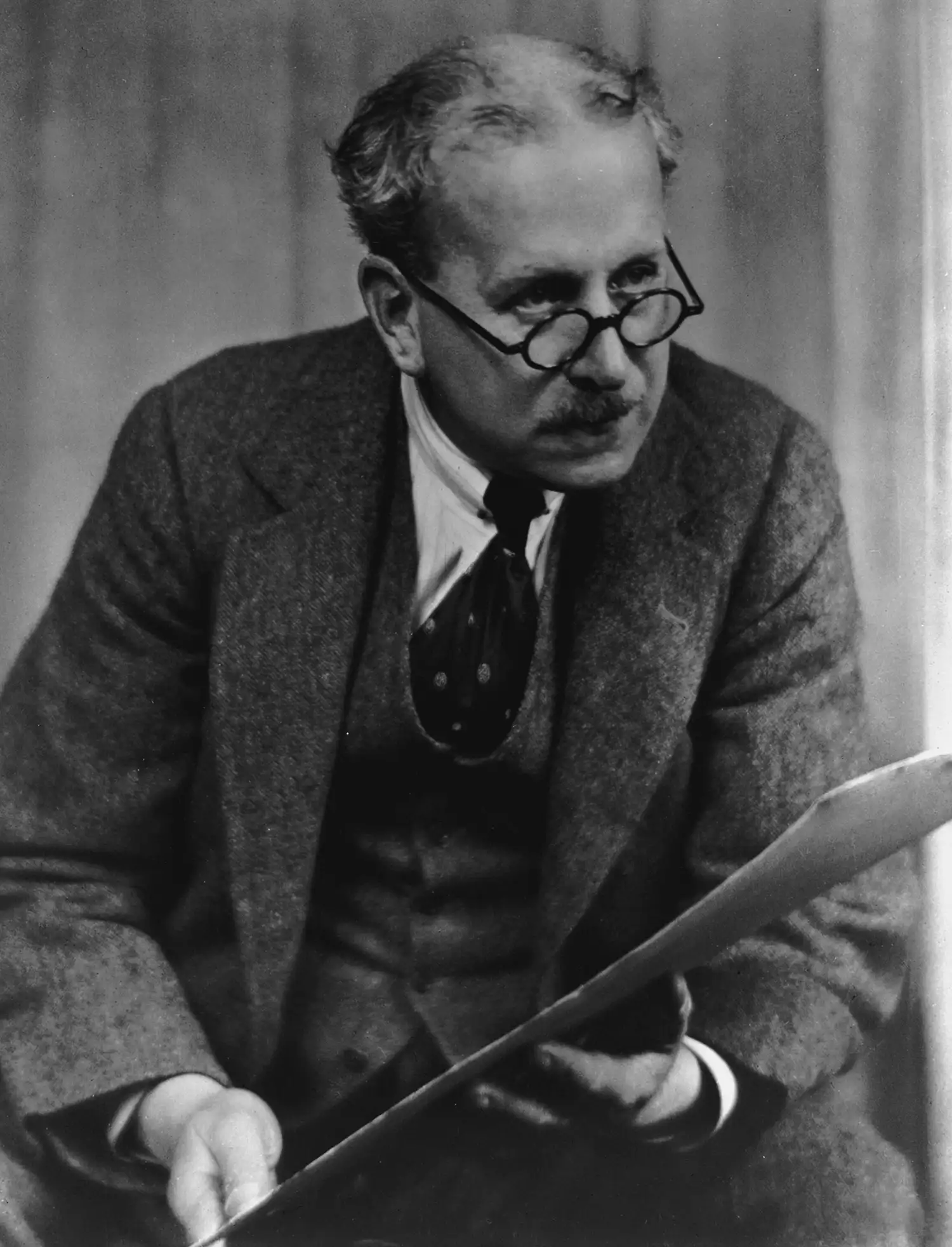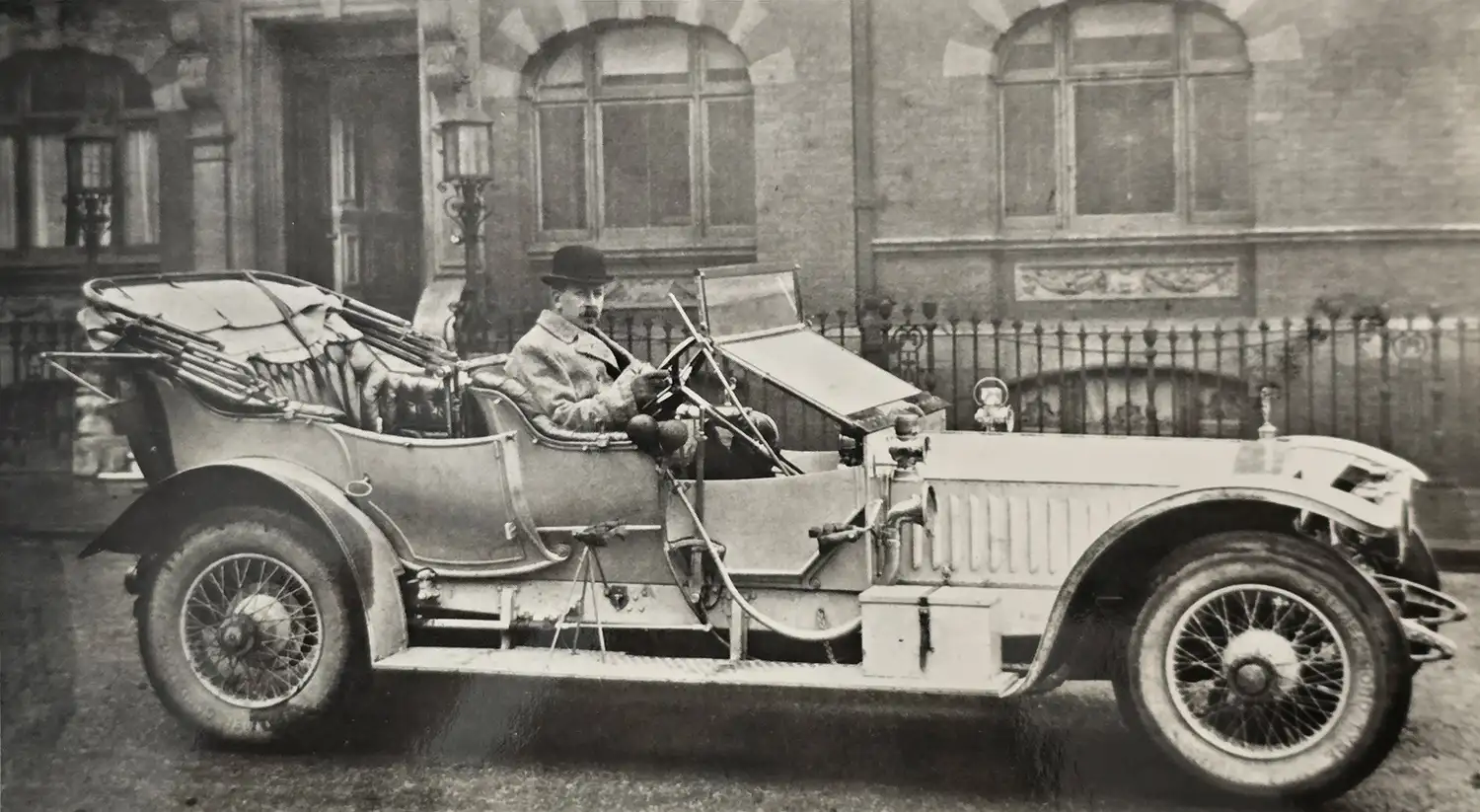
As we celebrate Rolls-Royce’s 120th anniversary in 2024, we spotlight Claude Goodman Johnson, born on 24 October 1864, a visionary widely regarded as the “hyphen” in Rolls-Royce. A man of remarkable foresight and influence, Johnson was instrumental in shaping Rolls-Royce into the luxury marque we know today. As the first Commercial Managing Director, his influence extended beyond mere business, leaving an indelible mark on the brand’s legacy.
The Rise of Claude Johnson
Johnson’s early career was steeped in event organization, where his talent for spectacle and showmanship began to take shape. Born in Buckinghamshire, he graduated from St. Paul’s School and pursued studies at the Royal College of Art. His organizational flair quickly became evident in his role at the Imperial Institute, where he managed large exhibitions that captivated London society.
His natural charisma and drive caught the eye of the burgeoning motor industry, leading him to the Automobile Club of Great Britain and Ireland (later known as the Royal Automobile Club). Johnson’s ability to organize events like the 1000 Mile Trial was pivotal in promoting the nascent motor industry, earning him wide respect.
Meeting Charles Rolls and Henry Royce
Johnson’s journey to Rolls-Royce was almost serendipitous. After his successful tenure with the Automobile Club, he became a partner in C.S. Rolls & Co., co-founded by Charles Rolls, where they sold high-end European cars. It was during this period that Rolls met Henry Royce and struck the deal to sell Royce’s cars, a meeting that changed the course of automotive history. Johnson joined this partnership and played an integral role in establishing Rolls-Royce in 1906.
A Master of Publicity
With his knack for publicity, Johnson ensured that Rolls-Royce quickly became synonymous with quality and luxury. He orchestrated several high-profile events, including the 15,000-mile endurance run by the iconic 40/50 H.P., dubbed ‘The Silver Ghost.’ Johnson’s flair for branding and marketing elevated the brand, with stunts such as balancing a glass of water on the car’s running engine without spilling a drop, showcasing the engineering brilliance of Rolls-Royce.
Perhaps one of Johnson’s most enduring contributions to the brand is the commission of the Spirit of Ecstasy mascot. Understanding the importance of aesthetics, Johnson tasked sculptor Charles Sykes with creating a symbol that would reflect the elegance and sophistication of Rolls-Royce vehicles—a legacy that continues to this day.
The Captain of Rolls-Royce
Johnson’s relationship with Henry Royce was one of mutual respect. While Royce was the technical genius behind the cars, Johnson was the driving force that ensured the company’s commercial success. Together, they steered Rolls-Royce to new heights, with Johnson often referred to as the “captain” of the company, a title bestowed upon him by Royce himself.
Despite his prominence, Johnson remained modest and focused on the company’s success. He declined personal accolades, such as a knighthood, believing that the recognition should go to Royce and the engineers.
A Lasting Legacy
Claude Johnson passed away on 11 April 1926, but his influence on Rolls-Royce remains strong. From pioneering marketing strategies to introducing technical innovations like the three-year guarantee, Johnson laid the groundwork for Rolls-Royce’s enduring reputation as “the best car in the world.” His contributions, from orchestrating the Silver Ghost’s rise to fame to the introduction of the New Phantom, are pivotal chapters in the marque’s storied history.
As we celebrate the marque’s 120th anniversary, we honor the man who, in his own words, was the “hyphen in Rolls-Royce,” binding the engineering brilliance of Henry Royce with the sales acumen of Charles Rolls, forging a brand that stands as a beacon of luxury and excellence in the automotive world.
Source: Rolls-Royce
This article was crafted with assistance from Chatgpt

